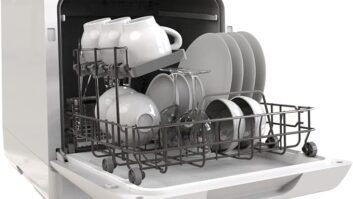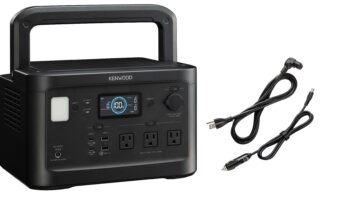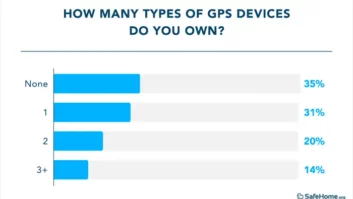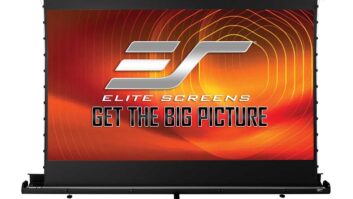Portable GPS devices are “flat but not out.”
Despite the fact sales hit a wall when the economy weakened and a tech war with the smartphone is on the horizon, the personal navigation device (PND) may yet see growth.
An encouraging sign is sales of PNDs with built in real-time traffic are on the rise. And new suppliers such as Motorola are pushing the category (see p. 22).
Many industry members hold that PND sales will grow once the economy rebounds because penetration remains at only about 15 percent.
But long-term PND growth is still uncertain. Smartphones are morphing into what the PND had ultimately hoped to become — a GPS device with an Internet connection for accessing weather, news and Google searches while in the car.
Plus, new categories of portable PCs, such as netbooks, mobile Internet devices (MIDs) and ultra-mobile PCs, can perform GPS tasks.
PND sales to consumers are expected to stay relatively flat to slightly down, at 16 million to 17 million units this year in North America. TRG predicted that in 2011, sales will start to decline a few percent each year due to competition from cellphones and OEM navigation.
TRG said PND revenues will decline from $4.7 billion in 2008 to $3.6 billion this year, and to $2.4 billion by 2013.
But some say the picture may be brighter. Not everyone wants to pay for the service charges for GPS on a cellphone. Over a few years of ownership, the PND might be cheaper to operate. “There is still hope for the PND as it offers ease of use at the lowest price,” stated ABI Research principal analyst Dominique Bonte.
But to keep average selling prices afloat, the market is searching for a new high end. Real-time traffic is finally catching on as a $50 step-up feature, but the true high end of the market is seen as the Internet-connected PND mentioned above.
Early attempts at Internet PNDs have failed. Best Buy launched two models under its house brand last fall that were quickly closed out. Dash Navigation also withdrew its Internet PND from the market.
Now TomTom is trying again with the Go 740 Live that goes on sale April 20 at a street price of $399 with a three-month free-trial period for Internet service. Thereafter, the service charge for features such as local Google search is $9.95/month.
Tom Murray, market development VP at TomTom, said, “Given the favorable response to the product amongst people in the industry and our retail partners — and the number of inquiries about the product … we are confident that consumer demand for the Go 740 Live … will be strong.”
ABI believes such units might win a following once the economy improves in 2010.
But Garmin and others said there is no viable business model yet for moderately priced Internet PNDs with no service fees, as it has been shown that consumers reject even $10/month charges.
“The embedded GPRS costs $25 to $30 and then you still need a SIM card and air time as well as content,” bringing costs for adding Internet to about $80, explained Ralf Hug, product management and marketing VP for Airbiquity, which sells OEM platforms for PNDs.
But several companies, including Airbiquity, are working on alternative solutions. Motorola may offer its own wireless PND solution this fall (see above).
Another model for the Internet PND may center on advertising support. Advertising is already showing promise in popularizing real-time traffic delivered to the PND.
Until recently, most suppliers offered real-time traffic over RDS radio with $60/year service fees. Under that model, the feature won only about a 5 percent share of PND sales. But Garmin began shipping free, ad-supported traffic late last year, and Navigon, under a different model, is also offering free traffic. In January, traffic sales climbed to 12 percent of total PND sales, said The NPD Group.
Garmin said it has seen “a big jump” in traffic sales since it moved to subscription-free traffic. Consumers also like that “you don’t have to log in and create an account. NPD picked up that it’s grown by 12.6 percent of all PNDs. That’s substantial. That shifts the mix toward the upper end of the low end products,” said Garmin sales director Jon Peckman.
Nextar will also offer a PND with ad sponsored, free traffic this month through Best Buy. The unit, called the 43-LT will sell for under $250 at a price not yet disclosed (see story p. xx in car section). A similar model, the Q4-LT will be offered through other retailers at $249 in May.
Now TRG is predicting it is only a matter of time before live traffic is offered in all PNDs. “If you don’t have it, people are not going to buy your device at some point,” said analyst Egil Juliussen of TRG.
Advertising can also popularize Internet PNDs, claimed Navteq. The Internet provides even more opportunities because ads can be interactive, said Navteq VP media development Michael Nappi.
Another model for connected PNDs might come through a Bluetooth connection to the user’s own cellular phone under a system developed by Airbiquity that is rolling out in the new Ford Sync radios. It uses the voice channel of the phone to send data so no data service fees are required. Airbiquity says PNDs using this platform will debut in the fourth quarter.
In the duration, as the PND market shifts, so suppliers are adjusting their strategies.
Navigon recently added a number of regional CE chains to its distribution with the aim of pushing more step up features that might require the salesmanship found at such stores.
Its distribution includes hhgregg, Nebraska Furniture Mart, Sixth Ave. Electronics, Fry’s Electronics, Electronics Expo and Car Toys. Many of these stores have commissioned salesmen, and they are able to explain features like lane view and historical traffic, said Naivgon CEO Michael Roach.
“In that 3-foot moment of truth you have maybe five or 10 seconds to tell our unique selling proposition. To do that, you need to have someone staffed on the floor,” he explained. Navigon claimed the strategy has been successful in Europe where it claims to be the No. 3 brand.
Nextar is continuing its pursuit of the food and drug-store chains. The company, which already sells through such stores as Kohls, Kmart/Sears, Target, Bon Ton, Belk, Bed Bath & Beyond and 7-Eleven, said it hopes to add CVS to its distribution soon and is pursuing Rite Aid. Some of these outlets, which experimented in GPS last Christmas, met with success and will pursue it again this Christmas, said business development and operations VP Andy Frankel.
When 7-Eleven approached Nextar, Frankel said, “I thought, ‘There’s a bad sale that will come back to haunt us.’ Not only did it not come back to haunt us, they did well with the product.”
Nextar sold 16,000 units to 7-Eleven over the 2008 holiday season, it said.













